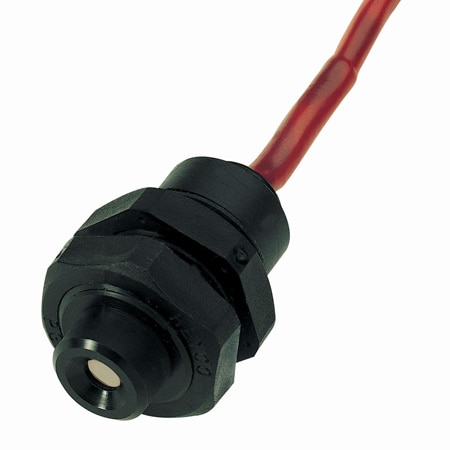An infrared (IR) thermometer is a device that measures the surface temperature of a subject by reading its thermal radiation levels. IR forehead thermometer have recently seen an upsurge in popularity due to the recent COVID-19 outbreak, offering a safe and effective way to screen people for elevated temperatures. However, because of their ability to measure temperature from a distance, these devices have a broader scope of application than just checking whether you have a fever.
IR thermometers are more common in an industrial environment as well as in several emergencies where temperature measurement through direct contact with the subject is often difficult or unsafe. These devices take advantage of a phenomenon called thermal radiation to record temperature from a distance.
Almost every object emits thermal radiation. The IR thermometer works by funneling this infrared radiation of a body to a point called a thermopile. The thermopile heats up and creates a change in the electric current passing through it. We get the temperature reading based on the current generated by the thermopile.
The range at which an IR thermometer can measure temperature, also called distance-to-spot-ratio, varies based on its construction. The most common distance-to-spot-ratios are 4:1, 8:1, 30:1, and even 50:1. The bigger the ratio, the farther you can stay away from the heat source.
While there are endless applications of infrared thermometers, check out the below three areas where these non-contact temperature measurement devices are most relevant.
Applications of Infrared Thermometers
Distance: The primary use of infrared thermometers is in measuring the temperature of a subject from a distance. The device is beneficial in situations where it is difficult to reach the object to record the temperature.
For example, IR thermometer can come handy when measuring the temperature of air conditioning units that are often out of reach. You can also use an Infrared thermometer to monitor the performance of engine cooling systems or detect hotspots on electrical systems and panels with limited access.
Dangerous: Measuring temperature at a distance has its advantages. Not all temperatures can be measured by directly being in contact with it. One such example is building fires.
Firefighters often use IR thermometer to identify hotspots in the event of a fire. These devices enable them to get accurate results without putting their lives at risk.
Another non-contact thermometers application is in monitoring industrial equipment such as boilers, furnaces, and high-temperature process pipes. With these handheld devices, workers can conveniently check the surfaces of these systems for elevated temperatures without direct contact.
Measuring temperatures in toxic or hazardous areas is also possible with these devices. However, getting the right IR thermometer rated for the right instance is vital to accurate temperature readings in any of these applications.
Movement: IR thermometers are also the hardware of choice for measuring the temperature of objects that are in constant motion. Since these devices are highly responsive, there is little to no delay in registering differences in temperature. As such, IR thermometers are ideal for measuring temperatures of moving objects since the object's speed doesn't skew results.
Examples can include measuring the temperature of conveyor belts in a processing plant, moving machinery, rollers, and other moving objects where temperature control is necessary.
Conclusion
While IR thermometer offer a convenient way to measure any object's surface temperature, it is crucial to select the right type of device for your application to ensure accuracy in temperature readings. There are infrared thermometers specially made for long-range measurements. Likewise, there are IR thermometer explicitly built for reading high temperatures from a limited distance but with better accuracy.


